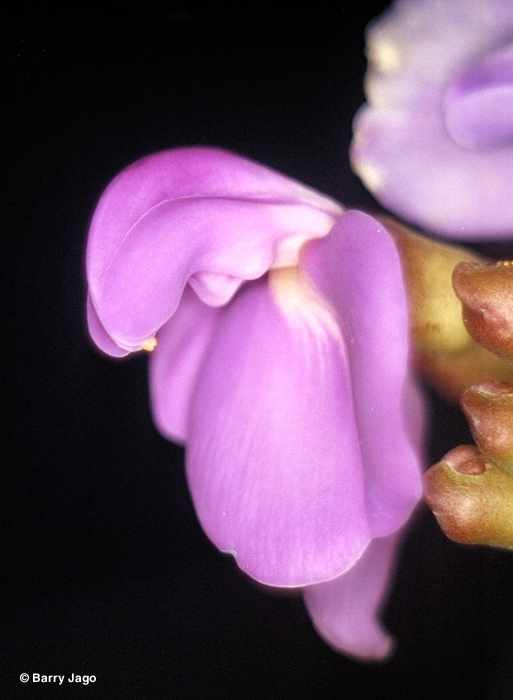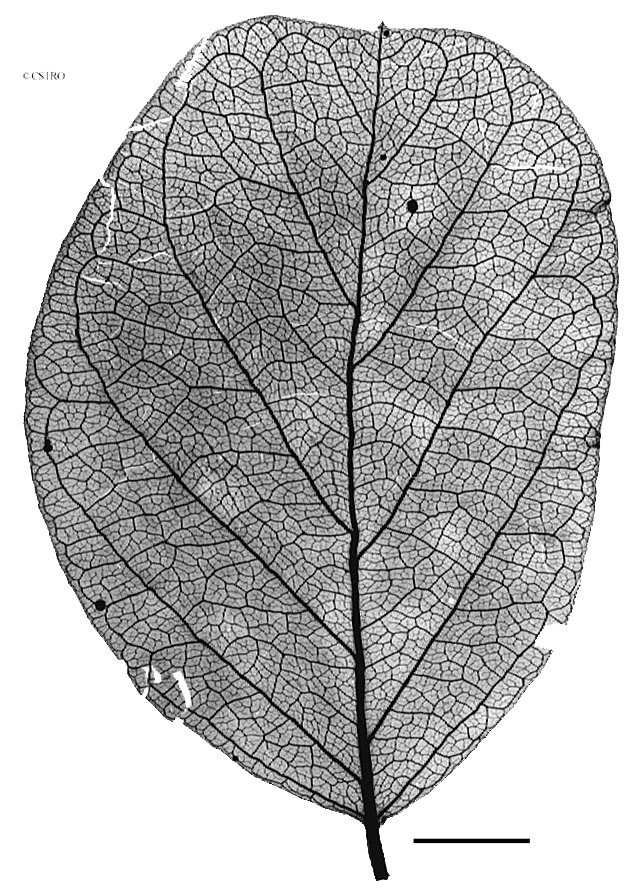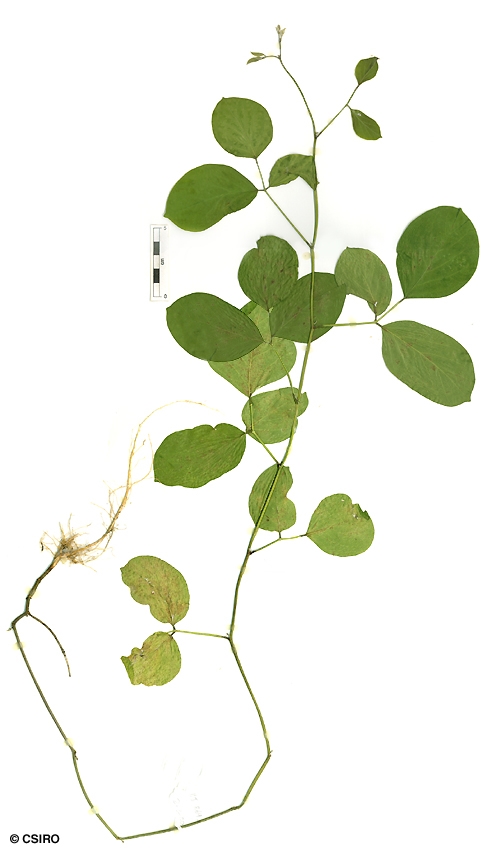Australian Tropical Rainforest Plants - Online edition
Canavalia rosea (Sw.) DC.




Candolle, A.P. de (1825) Prodromus 2: 404.
Bean, Beach; Coastal Jack Bean; Bean, Coastal Jacl; Bean, Mackenzie; Coastal Canavalia; Canavalia, Coastal; Beach Bean; Bean, Beach; Fire Bean; Mackenzie Bean
A slender vine not exceeding a stem diameter of 2 cm.
Middle leaflet blade about 6.3-7 x 5-6.2 cm, stalk about 2.5-3.5 cm long, grooved on the upper surface. Lateral leaflet blades about 5.5-7.4 x 3.5-4.8 cm on stalks about 0.3-0.5 cm long. Compound leaf petiole about 3.5-5.2 cm long, grooved on the upper surface. Stipules caducous. Stipels about 2.5-3 mm long. Lateral veins forming loops inside the blade margin.
Racemes longer than the leaves. Flowers about 20-25 mm diam. at anthesis. Calyx tube about 12-14 mm long, lobes of unequal size, about 1.6-3.5 mm long. Petals: standard about 25 mm long; wings and keel about 23 mm long. Stamens 10, all filaments +/- fused to form a tube about 15-18 mm long with free filaments projecting above the tube. Free filaments about 3-6 mm long, alternately longer and shorter. Ovary elongated, densely clothed in appressed pale (whitish) hairs. Style glabrous. Stigma cup-shaped. Ovules about eight.
Fruits about 7-13.5 x 2-2.5 cm with raised lines along the edges. Seeds 4-10 per pod, each seed ellipsoid, about 13-14 x 10-11 x 7-8 mm. Hilum conspicuous, about 8-9 mm long. Radicle about 2 mm long, much shorter and narrower than the thick cotyledons. Radicle lying along the edge of the cotyledons.
Cotyledons thick and fleshy, upper surface flat, lower surface convex, obovate to elliptic in outline, about 17 x 10 mm, asymmetrical at the base. Venation not visible. First leaves +/- reniform, wider than long, apex mucronate, base shallowly cordate, palmately veined, glabrous on the underside. Third leaf trifoliolate. At the tenth leaf stage: leaflets ovate to elliptic, apex shortly mucronate or abruptly acuminate, base cuneate to obtuse. Stalk of the middle leaflet pulvinate and much longer than the midrib. Midrib and lateral veins raised on the upper surface of the leaflet blades. Both the upper and lower leaflet blade surfaces clothed in appressed white hairs. Stipules about 2-3 mm long, clothed in appressed white hairs. Stems trailing. Seed germination time 12 to 33 days.
Occurs in WA, NT, CYP, NEQ, CEQ and southwards as far as south-eastern New South Wales. Altitudinal range quite small, normally growing just above hide tide level. Usually grows on beaches in the strand vegetation but occasionally found in beach forest and monsoon forest in maritime situations. Also occurs in Asia, Malesia and the Pacific islands.
Food plant for the larval stages of the Dark Cerulean Butterfly. Common & Waterhouse (1981).
Aborigines drank an infusion of the roots for colds, and applied this preparation externally for rheumatism and general aches and pains, and also for leprosy. Cribb (1981).
Occasionally cultivated as a cover crop or as a sand-binder. Beans are edible when cooked but were rarely consumed by Aborigines. Of no grazing significance. Naturally an important species for beach and dune stabilization. Hacker (1990).





